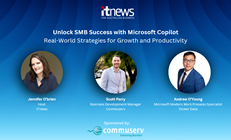“These were not just an event for us,” she said. “It was the way to learn more from our customers, learn about what we were doing, what else we could do to ensure that we were addressing their requirements.”
Mehta described each gathering as “a great way for us to pause, go back to our community, learn what’s working, what’s not working, and where else we need to do more.” Having recently met with customers across London and Sydney, Mehta said Australia had “always been my favourite.”
The duality of AI
A recurring theme across regions, Mehta said, was how artificial intelligence was transforming identity security. “A lot had changed within three or four months. People thought ChatGPT was just a chatbot,” she noted. “With the rise of AI, organisations were struggling with how to manage the duality of AI. Yes, they wanted to empower their business, but they also wanted to do it securely.”
She explained that identity programs now had to manage both human and non-human identities, from chatbots to autonomous systems. “You’re talking about human identities to now non-human identities… where autonomous systems are making consequential decisions,” she said.
Guardrails for secure adoption
Mehta cautioned that adopting AI “was not going to be an easy game.” Blocking AI wasn’t a viable strategy, she said. Instead, organisations had to “accept and embrace it, with proper guardrails.”
“We were strong proponents of AI,” she added. “But it needed to be done very securely. Otherwise, you ended up in the same situation that happened with Microsoft Copilot, where data was exposed. That’s where the duality plays a role: AI can make us more efficient, but only if we manage it securely.”
Visibility drives governance
For Mehta, strong governance begins with visibility. “You can’t control what you don’t know about,” she recalled a CISO once telling her. “He said, ‘I’m not concerned about the data I know I lost. I’m concerned about the data I’m not aware of.’”
That lesson, she said, applied directly to AI. “Having complete visibility into your environment — who is accessing what, what they are doing with that access, and being able to revoke it when it’s no longer needed, was critical to establishing governance.”


.png&h=140&w=231&c=1&s=0)







 Digital NSW 2025 Showcase
Digital NSW 2025 Showcase







_(17).jpg&h=271&w=480&c=1&s=1)




_(1).jpg&h=140&w=231&c=1&s=0)



